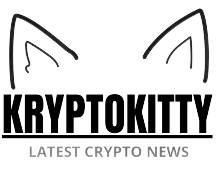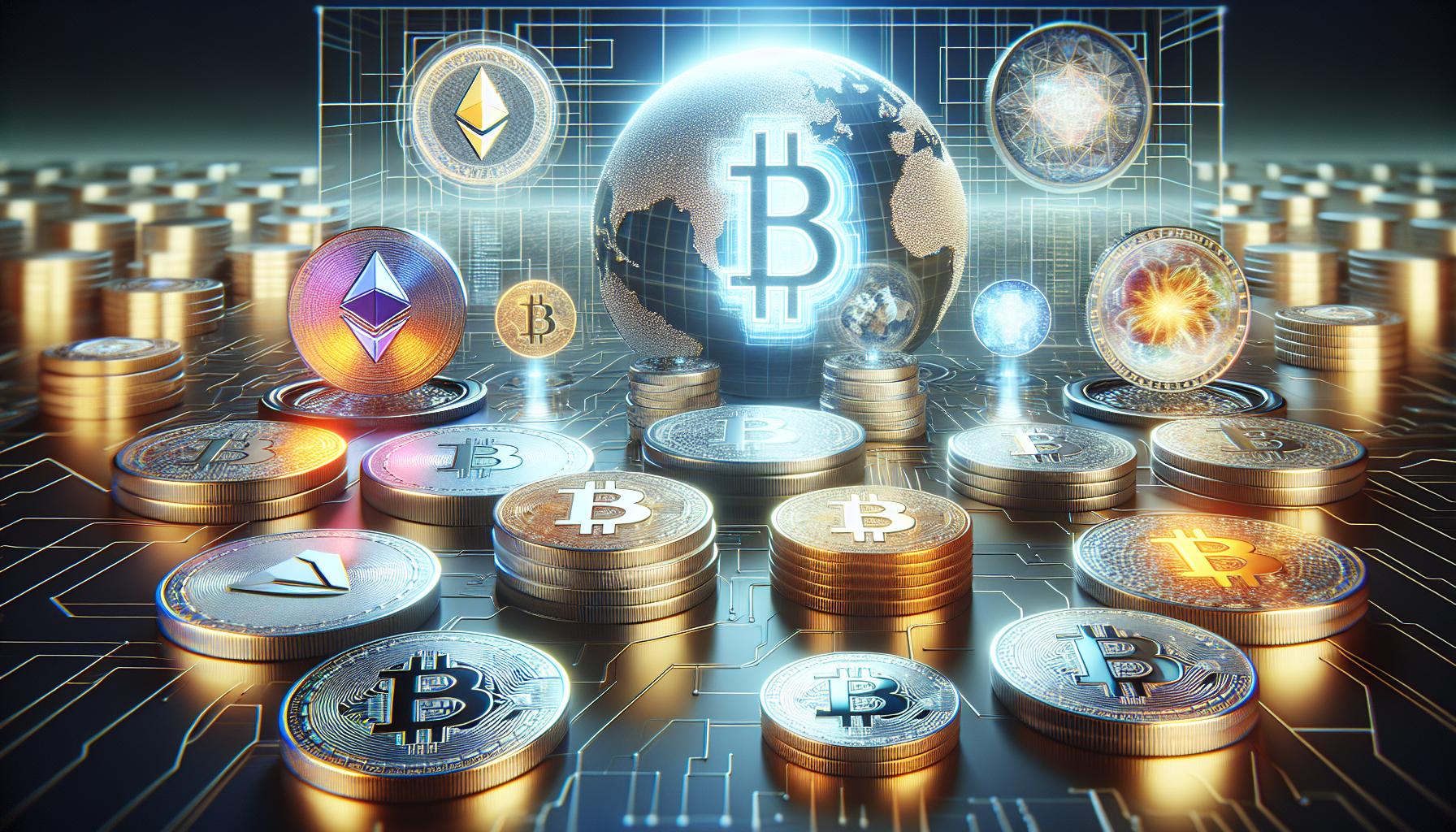If you’ve ever wondered about the future of finance and technology, decentralized digital assets are at the forefront of this revolution. Imagine a world where transactions are secure, transparent, and free from traditional banking systems’ limitations. Decentralized digital assets, such as cryptocurrencies and non-fungible tokens (NFTs), are reshaping how we perceive and interact with money and assets in the digital age.
In a decentralized ecosystem, you have the power to control your assets without relying on intermediaries like banks or financial institutions. The concept of decentralized digital assets is not just about innovation; it’s about empowering individuals to take ownership of their financial future. As you delve into the world of decentralized digital assets, you’ll discover a new realm of possibilities and opportunities that can redefine the way we exchange value in the modern world.
Understanding Decentralized Digital Assets
Decentralized digital assets are revolutionizing the financial landscape. They operate on a peer-to-peer network without the need for intermediaries like traditional banks. This means that you have total control over your assets, ensuring security and transparency in transactions. Unlike centralized systems, where a single entity has control, decentralized assets are distributed across a network of nodes, making them resistant to manipulation. By removing the middlemen, decentralized digital assets empower you to manage your wealth independently.
How Digital Assets Work in a Decentralized System
In a decentralized system, digital assets rely on blockchain technology for their operation. Blockchain is a secure and transparent ledger that records all transactions in a tamper-proof manner. When you engage with decentralized digital assets, each transaction is verified by a network of nodes, ensuring its validity without the need for a central authority. This system guarantees the integrity of the transactions and eliminates the risk of fraud or unauthorized alterations. As a result, you can participate in a global financial ecosystem that is efficient, secure, and inclusive.
The Rise of Decentralized Digital Assets
Historical Context and Evolution
Dive into the historical context and evolution of decentralized digital assets to understand their significance in shaping the financial landscape.
In the past decade, decentralized digital assets have gained immense traction, revolutionizing traditional financial systems. From the introduction of Bitcoin in 2009 as the pioneering cryptocurrency to the development of Ethereum, which introduced smart contracts and NFT standards, these assets have reshaped how we perceive and utilize wealth in the digital age. The evolution from simple cryptocurrencies to more complex digital assets like NFTs has expanded the possibilities for decentralized finance and ownership.
Case Studies: Bitcoin and Ethereum
Explore the case studies of Bitcoin and Ethereum to grasp the practical applications and impact of decentralized digital assets.
Bitcoin, the first decentralized digital currency, provided a glimpse into the potential of a peer-to-peer electronic cash system, disrupting conventional banking models and offering users a secure and transparent medium of exchange. On the other hand, Ethereum brought programmability to blockchain, enabling the creation of smart contracts and decentralized applications (DApps). Ethereum’s ERC-20 and ERC-721 standards paved the way for the explosion of NFTs, transforming digital art ownership and introducing new concepts like virtual cat marketplaces and blockchain collectibles. These case studies exemplify the transformative power of decentralized digital assets in redefining ownership, security, and innovation within the financial and technological spheres.
By examining the historical context and case studies of leading decentralized digital assets such as Bitcoin and Ethereum, you can grasp the progressive evolution and real-world applications of these groundbreaking technologies.
The Technology Behind Decentralized Assets
Blockchain Explained
Blockchain technology serves as the foundation for decentralized digital assets like cryptocurrencies and NFTs. It is a distributed ledger system that records transactions across a network of computers in a secure and transparent manner. Here’s how it works:
- Decentralization: In a blockchain network, transactions are validated and recorded by a peer-to-peer network of computers, known as nodes, without the need for a central authority. This decentralization ensures that the system is resilient to single points of failure, enhancing security and trust.
- Cryptographic Security: Blockchain secures data through cryptographic techniques, making it tamper-proof and immutable. Each block in the chain contains a unique cryptographic hash that links it to the previous block, forming a chain of blocks that are interconnected and resistant to alterations.
- Transparency and Consensus: Transactions on the blockchain are transparent, meaning they can be publicly viewed by anyone. To add a new block to the chain, a consensus mechanism is employed, ensuring agreement among network participants on the validity of transactions without the need for intermediaries.
- Smart Contracts: These self-executing contracts are built on blockchain technology and automatically enforce the terms of an agreement when predefined conditions are met. Smart contracts enable trustless interactions and automate processes, reducing the need for manual intervention.
Smart Contracts and Their Role
Smart contracts play a pivotal role in the functionality of decentralized assets by enabling automated and secure transactions. Here’s how they contribute to the decentralized ecosystem:
- Automation: Smart contracts automate the execution of transactions, eliminating the need for intermediaries and streamlining processes. This automation leads to increased efficiency and cost savings in various industries, including finance, supply chain management, and more.
- Security: By operating on a tamper-proof blockchain network, smart contracts enhance security and reduce the risks associated with fraud and manipulation. Once deployed, smart contracts cannot be altered, providing a high level of trust in the transaction process.
- Decentralization: Smart contracts embody the principles of decentralization by removing the reliance on central authorities or intermediaries for transaction validation. This decentralization fosters a more democratic and inclusive financial system that empowers individuals to control their assets securely.
The combination of blockchain technology and smart contracts forms the backbone of decentralized digital assets, reshaping traditional financial systems and offering new possibilities for secure and transparent transactions. By leveraging these innovative technologies, individuals can participate in the evolving landscape of decentralized finance and ownership.
Advantages of Decentralized Digital Assets
Decentralized digital assets offer a myriad of benefits that can revolutionize the way we interact with finance and technology. Let’s delve into some key advantages of these innovative assets.
Increased Security and Fraud Prevention
With decentralized digital assets, security is paramount. By leveraging blockchain technology, transactions are secure, transparent, and verifiable. Blockchain’s decentralized nature means that there is no single point of failure, reducing the risk of fraud or hacking. Every transaction is recorded on a public ledger, ensuring accountability and preventing tampering.
Fostering Financial Inclusion
Decentralized digital assets have the potential to foster financial inclusion on a global scale. Traditional financial systems often exclude individuals without access to banking services. With decentralized assets like cryptocurrencies, anyone with an internet connection can participate in financial transactions, without the need for intermediaries. This can empower individuals in underserved regions to access financial services and participate in the global economy.
Enhancing Privacy and Autonomy
One of the key advantages of decentralized digital assets is the increased level of privacy and autonomy they offer. Users have greater control over their own financial assets without relying on centralized authorities. Transactions can be conducted pseudonymously, providing a level of privacy that traditional financial systems may lack. This autonomy gives individuals the freedom to manage their assets without external interference.
Decentralized digital assets bring a wealth of advantages including enhanced security, financial inclusion, and increased privacy and autonomy. Embracing these assets can lead to a more transparent, efficient, and inclusive financial ecosystem in the digital age.
Challenges and Limitations
Scalability Issues
Scaling decentralized digital assets, such as cryptocurrencies and NFTs, presents a significant challenge in the evolving landscape of digital finance. As the popularity and usage of these assets grow, the underlying blockchain technology faces limitations in handling a large number of transactions quickly and cost-effectively. Transaction speed and network congestion can lead to high fees, especially during periods of peak activity. For instance, Ethereum, a prominent blockchain network for NFTs, has been plagued by scalability issues due to its current consensus mechanism. Addressing scalability is crucial to support a broader adoption of decentralized digital assets across various sectors without compromising efficiency.
Regulatory Uncertainty
Navigating regulatory frameworks poses another obstacle to the widespread acceptance of decentralized digital assets. The evolving nature of cryptocurrencies and NFTs often outpaces existing regulations, leading to uncertainty and ambiguity in legal environments worldwide. Regulatory bodies globally are grappling with how to classify and regulate these assets effectively, impacting their integration into traditional financial systems. Issues such as taxation, investor protection, and anti-money laundering measures add layers of complexity to the regulatory landscape. Clarifying and establishing consistent regulations will be essential to foster confidence and legitimacy in the use of decentralized digital assets.
Technical Barriers for Users
Users engaging with decentralized digital assets may encounter technical barriers that hinder seamless interactions with blockchain networks. The complexity of setting up wallets, managing private keys, and understanding transaction processes can be daunting for newcomers to the digital asset space. For instance, issues related to gas fees on Ethereum can be confusing for users trying to execute transactions cost-effectively. Enhancing user experience through intuitive interfaces, educational resources, and simplified processes is crucial for broader adoption. Overcoming technical barriers will be vital in ensuring that decentralized digital assets become more accessible and user-friendly for a wider audience.
Future of Decentralized Digital Assets
Innovations on the Horizon
The future of decentralized digital assets like cryptocurrencies and NFTs is brimming with innovative solutions to overcome current challenges. Developers and tech enthusiasts are actively working on enhancing scalability, regulatory compliance, and user experience to ensure broader adoption and integration of these assets across various industries.
Scalability Solutions:
Innovations in blockchain technology are focused on improving transaction speeds and network congestion issues. Protocols like Ethereum 2.0 aim to enhance scalability by shifting towards a proof-of-stake consensus mechanism, which is expected to significantly increase the network’s capacity to handle transactions more efficiently.
Regulatory Advancements:
Anticipated regulatory clarity will pave the way for more widespread acceptance of decentralized digital assets. As governments around the world develop frameworks to regulate cryptocurrencies and NFTs, businesses and individuals will gain confidence in participating in these digital ecosystems without the fear of uncertain legal implications.
Enhanced User Experience:
Technological advancements in user interfaces and crypto wallets are set to simplify the interaction between users and blockchain networks. User-friendly platforms like DapperWallet are streamlining the process of managing and trading digital assets, making it easier for individuals to engage with decentralized finance and NFT marketplaces.
Predictions for Market Growth and Adoption
The trajectory of decentralized digital assets points towards exponential market growth and increased adoption in the coming years. Industry experts forecast significant advancements in the utilization of cryptocurrencies and NFTs across various sectors, driven by evolving technologies and changing consumer behaviors.
Market Expansion:
The market for decentralized digital assets is expected to expand rapidly as more investors, businesses, and institutions recognize the benefits of blockchain technology. With the integration of cryptocurrencies into mainstream financial systems and the rising popularity of NFTs in digital collectibles and art, the market is poised for substantial growth in the near future.
Diverse Applications:
Predictions suggest a surge in the use of decentralized digital assets beyond traditional finance into areas like gaming, art, real estate, and intellectual property. The versatility of blockchain technology enables innovative applications such as digital ownership certificates, virtual real estate trading, and tokenized art collections, opening up new avenues for asset ownership and management.
Global Adoption:
As awareness and understanding of decentralized digital assets increase, global adoption rates are projected to soar. Emerging economies and tech-savvy populations are embracing cryptocurrencies and NFTs as viable alternatives to traditional assets, contributing to the democratization of finance and cultural ownership on a global scale.
Conclusion
Decentralized digital assets have revolutionized the financial landscape, offering unprecedented levels of security, transparency, and efficiency. The evolution of cryptocurrencies and NFTs has reshaped traditional financial systems, paving the way for a more inclusive and accessible future. Despite challenges like scalability and regulatory concerns, ongoing innovations in technology and regulations are propelling decentralized assets towards mainstream adoption. The potential for growth and expansion into various sectors indicates a promising trajectory for the global acceptance of cryptocurrencies and NFTs. As we move forward, embracing these digital assets opens doors to new opportunities and possibilities, driving a paradigm shift in how we perceive and interact with financial instruments.
Frequently Asked Questions
What are decentralized digital assets?
Decentralized digital assets are digital currencies or tokens that operate on distributed ledger technology without a central authority controlling them. Examples include cryptocurrencies like Bitcoin and Ethereum and non-fungible tokens (NFTs).
How do decentralized digital assets impact finance and technology?
Decentralized digital assets provide increased security, transparency, and efficiency in global financial transactions. They help reshape traditional financial systems by offering alternatives that are accessible to a broader audience.
What challenges do decentralized digital assets face?
Challenges include scalability issues, regulatory uncertainty, and technical barriers. Overcoming these obstacles is crucial for the broader adoption and integration of decentralized digital assets into various industries.
What does the future hold for decentralized digital assets?
The future includes innovations in scalability solutions, regulatory advancements, and enhanced user experiences to drive broader adoption. Market growth predictions indicate exponential expansion into sectors like gaming, art, real estate, and intellectual property.
How are cryptocurrencies and NFTs becoming widely accepted alternatives?
Both cryptocurrencies and NFTs are gaining acceptance due to their utility, uniqueness, and potential for investment. As more industries explore their applications, adoption rates are expected to increase globally.








